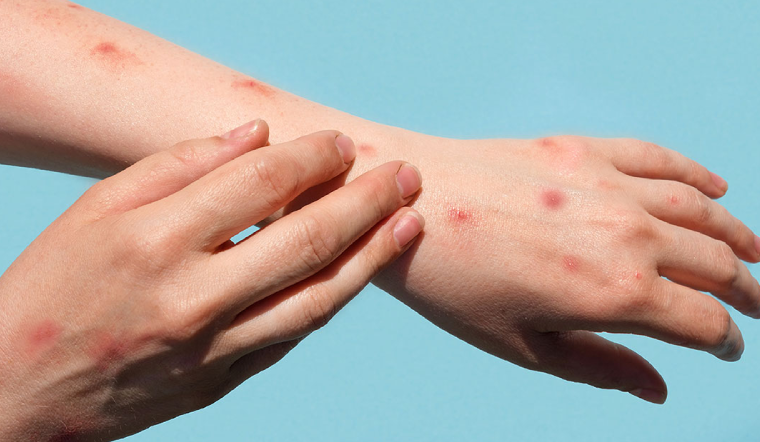Introduction: A Personal Story of Mpox
Imagine waking up one morning with a strange rash spreading across your body. At first, you think it’s just a bad reaction to a new soap. But then, the rash starts to itch uncontrollably, and you notice bumps appearing on your hands. This was the reality for me when I was hit by the monkeypox virus, now known as mpox. My journey from confusion to healing was anything but straightforward, filled with moments of fear and determination.
What is Monkeypox?
Defining Monkeypox
Monkeypox is a viral zoonosis, meaning it’s a virus that originally comes from animals but can infect humans. It was first discovered in monkeys in 1958, but its name is somewhat misleading since rodents can also carry the virus. The virus belongs to the Orthopoxvirus genus, which also includes smallpox.
Historical Context of Monkeypox
Monkeypox was first identified in humans in the Democratic Republic of Congo in 1970. Historically, outbreaks have been relatively rare but localized primarily in Central and West Africa. In recent years, there have been increased cases outside these regions, making it a global health concern.
How Do You Get Monkeypox?
Transmission Methods
Monkeypox spreads through direct contact with the bodily fluids or lesions of an infected person or animal. It can also be transmitted by touching contaminated objects or surfaces. The virus is less contagious than other poxviruses, like smallpox, but it can still spread efficiently through close contact.
Monkeypox on Hands and Other Areas
Monkeypox often starts with flu-like symptoms, followed by a rash. The rash can appear anywhere on the body, including the hands, face, and other exposed areas. The bumps can turn into sores, which are both painful and contagious.
Symptoms and Diagnosis
Recognizing Symptoms
The symptoms of monkeypox typically begin with fever, chills, and muscle aches, progressing to a distinctive rash. The rash evolves from flat spots to raised bumps and then to fluid-filled vesicles before eventually forming scabs.
Common Symptoms
- Fever
- Headache
- Muscle aches
- Fatigue
- Rash that progresses through various stages
Rare Symptoms
In some cases, individuals might experience severe complications, such as secondary infections or more generalized rashes.
Diagnosis Process
Diagnosis usually involves a combination of clinical examination and laboratory tests. Healthcare providers may use PCR tests to confirm the presence of the virus. It’s crucial to seek medical attention if you suspect you have monkeypox to ensure proper diagnosis and treatment.
Monkeypox Treatment
Current Treatment Options
Currently, there is no specific antiviral treatment approved for monkeypox. Treatment focuses on relieving symptoms and preventing complications.
Medications
Some antiviral drugs used for smallpox may be effective, but they are not routinely prescribed. Instead, supportive care—such as hydration, pain relief, and fever management—is commonly recommended.
Supportive Care
Supportive care is crucial. This includes managing symptoms such as itching and pain and preventing secondary infections. Keeping the rash clean and dry can help reduce the risk of bacterial infections.
Alternative Remedies and Support
While there is no cure, certain home remedies can alleviate symptoms. Bathing in colloidal oatmeal, applying soothing creams, and staying well-hydrated are often recommended. Always consult a healthcare provider before trying alternative treatments.
How to Prevent Monkeypox
Preventive Measures
Preventing monkeypox involves avoiding contact with infected animals or people. Practicing good hygiene, such as frequent hand washing and avoiding close contact with people showing symptoms, is essential.
Vaccination and Its Importance
Vaccination is a critical preventive measure. Although there’s no specific vaccine for monkeypox, the smallpox vaccine provides some cross-protection. If you’re traveling to areas with active outbreaks or are at high risk, getting vaccinated can be a valuable preventive step.
Personal Experience with Healing
Steps to Recovery
My recovery from monkeypox was a combination of medical treatment and personal care. I followed my doctor’s advice, maintained a healthy diet, and made sure to rest as much as possible. The healing process was slow but steady, and following the prescribed treatment helped me manage the symptoms effectively.
Lessons Learned
One key lesson I learned was the importance of seeking medical advice early on. Early intervention and proper management can make a significant difference in recovery time and reduce the risk of complications.
Conclusion
The journey through Mpox is undoubtedly challenging, but with the right knowledge and treatment, recovery is possible. Understanding how the virus spreads, recognizing the symptoms, and following effective treatment options are crucial for managing this condition. If you find yourself facing mpox, remember that medical professionals are there to guide you through the healing process




